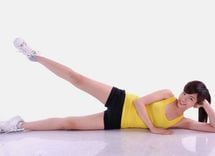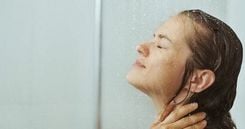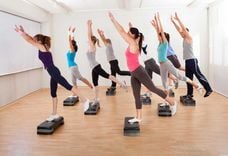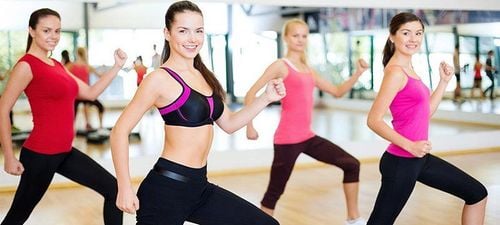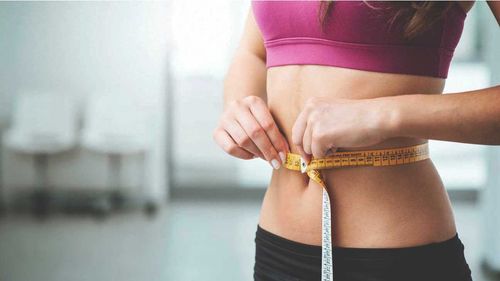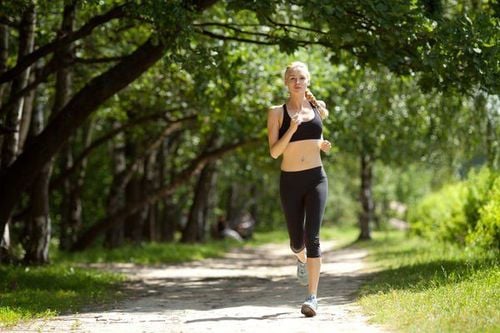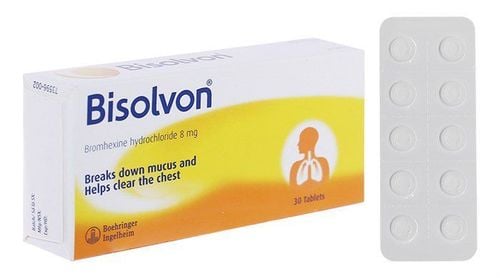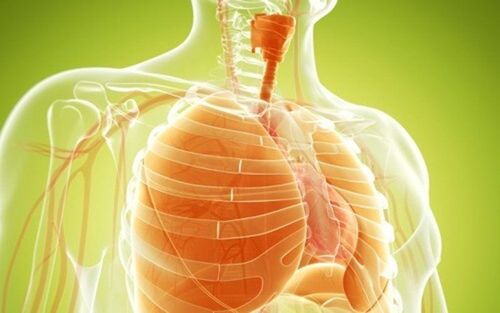This is an automatically translated article.
Many patients with chronic obstructive pulmonary disease have been taught how to breathe through the diaphragm, using the abdominal muscles to push air out of the lungs. The patient lies on his back, places his hands on his abdomen and practices diaphragmatic breathing.
However, experts say, there is no evidence to support the value of diaphragmatic breathing. When the patient stops exercising, they return to normal breathing.
"Trying to teach someone to breathe through the diaphragm or to breathe through the belly is probably not effective because the mind will return them to a way of breathing that puts less stress on the abdominal muscles," said Gerard Criner, MD, a researcher pathologist and professor of medicine at Temple University.
Some breathing exercises for COPD patients include:
1. Tight lip breathing exercise: A useful technique
Besides diaphragmatic breathing, another popular technique, pursed-lip breathing, offers more benefits, says Criner. This technique can really ease shortness of breath.
To perform pursed lip breathing, the patient should sequentially follow these steps:
Relax the neck and shoulder muscles; Inhale for two seconds through the nose, while the mouth is closed; Exhale for 4 seconds by pursed lips. If 4 seconds is too long for you, simply exhale twice as long as you inhale. Pursed-lip breathing may be particularly helpful for patients with chronic obstructive pulmonary disease complicating emphysema, a common situation. “People with emphysema have very easy airways,” says Norman H. Edelman, medical director at the American Lung Association and professor of preventive medicine and internal medicine at the State University of New York at Stony Brook. be narrowed. "If you teach them to inhale normally but exhale through a narrow opening of the lip, they keep the pressure in the airways up and it tends to prevent the large airways from collapsing."
Criner says in COPD patients with advanced emphysema, pursed-lip breathing can also widen the airways enough to let out more air. "That could allow some of the air trapped in the lungs to be released, so it reduces the amount of air trapped in the chest," says Criner. When shortness of breath occurs, other tactics may also help. Patients should try applying cold water to their face or using a fan to blow cold air onto their face. According to Criner, such measures will stimulate the body's responses to reduce the feeling of shortness of breath.

Nhiều bệnh nhân mắc bệnh phổi tắc nghẽn mãn tính đã được dạy cách thở bằng cơ hoành
2. Pulmonary rehabilitation programs
Criner suggests: While diaphragmatic breathing may not be effective, other techniques taught through a pulmonary rehabilitation program may be more effective. Some pulmonary rehabilitation programs use breathing equipment, called a respiratory muscle trainer, that trains the patient to increase the pressure that the respiratory muscles must produce with each breath.
Criner says: “You can't really train 2 lungs, but you can train your respiratory muscles to be stronger or have more endurance. He said: “Training the respiratory muscles can make them about 20% to 25% stronger. "However, it's hard to show that if you make them stronger, that's related to improved performance. But sick people can make them stronger, which in turn helps clear the secretions in the tract. breathing and relieve cough." The respiratory muscles will have greater reserves to make exhalation easier, he said.
Criner says it's important to get good advice from a pulmonary rehabilitation program about effective devices. Lung machines and other devices advertised on the Internet often don't really work.
"They're like kazoos," he said. "Instead of searching the Web and buying things that might not be helpful, go to a pulmonary rehabilitation program. They can tell you about the best information and approaches. They'll customize it.
"Pulmonary rehab programs also teach patients exercises to strengthen arms and legs, a therapy Edelman says is valuable. for patients with COPD. Typically, patients do aerobic exercises and muscle-strengthening exercises.
Edelman says: “The evidence for old-fashioned exercise is pretty good. "You can make the muscles and the circulatory system work more efficiently so it can deliver oxygen to the working muscles better. And of course, that reduces the burden on the lungs because you need less oxygen. than for blood."
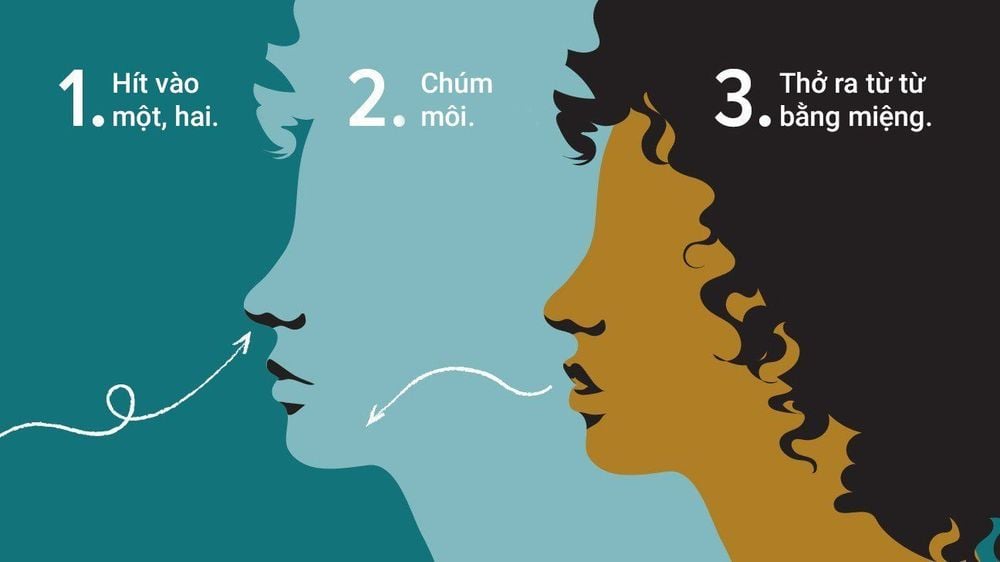
Bên cạnh thở với cơ hoành, một kỹ thuật phổ biến khác, thở mím môi, mang lại nhiều lợi ích hơn
3. When to call the doctor?
If you have chronic obstructive pulmonary disease, you may experience a rapidly worsening episode of shortness of breath. Other symptoms may also be present, including chest tightness, increased cough, increased mucus production, or fever. Call your doctor at once to discuss whether treatment is needed, possibly because a lung infection or other problems have developed.
According to the National Heart, Lung and Blood Institute, you must seek emergency medical care if you have symptoms such as:
Sudden difficulty walking or talking; fast or irregular heartbeat; Lips or fingernails that look gray or blue; Breathing is fast and difficult, even while taking medication. In addition to the application of breathing exercises, patients with chronic obstructive pulmonary disease also need periodic health checks at a reputable medical facility to check their health and have an effective treatment regimen. Currently, Vinmec International General Hospital is one of the leading prestigious hospitals in the country, trusted by a large number of patients for medical examination and treatment. Not only the physical system, modern equipment: 6 ultrasound rooms, 4 DR X-ray rooms (1 full-axis machine, 1 light machine, 1 general machine and 1 mammography machine) , 2 DR portable X-ray machines, 2 multi-row CT scanner rooms (1 128 rows and 1 16 arrays), 2 Magnetic resonance imaging rooms (1 3 Tesla and 1 1.5 Tesla), 1 room for 2 levels of interventional angiography and 1 room to measure bone mineral density.... Vinmec is also the place to gather a team of experienced doctors and nurses who will greatly assist in diagnosis and detection. early signs of abnormality in the patient's body. In particular, with the space designed according to 5-star hotel standards, Vinmec ensures to bring the patient the most comfort, friendliness and peace of mind.
Please dial HOTLINE for more information or register for an appointment HERE. Download MyVinmec app to make appointments faster and to manage your bookings easily.
